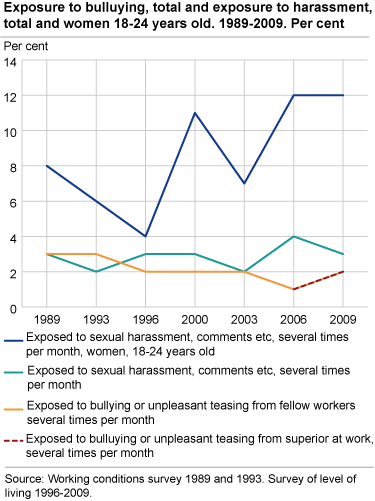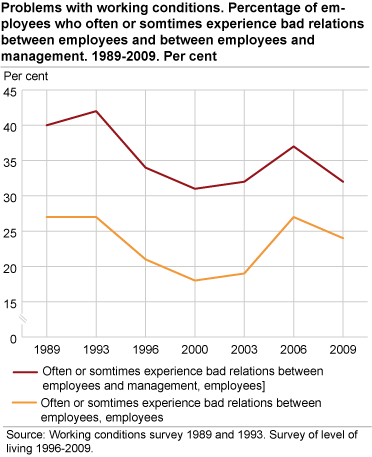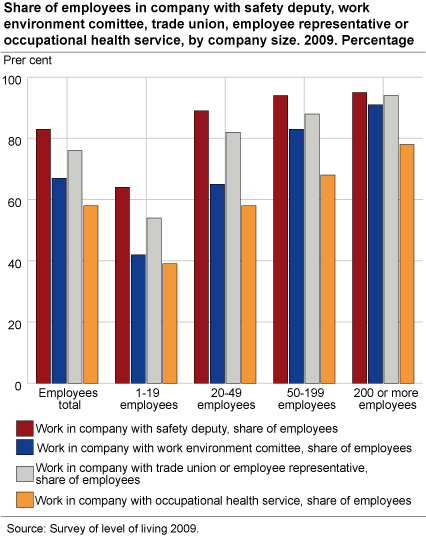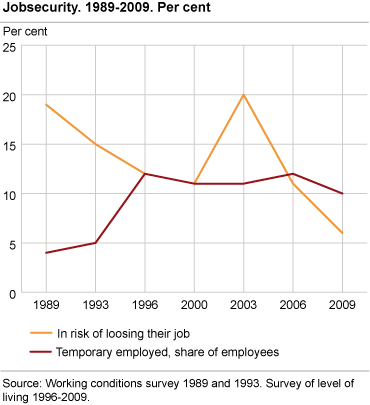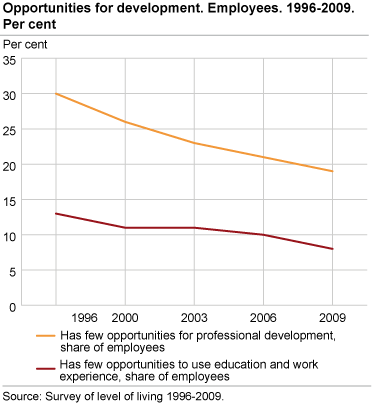Content
Published:
This is an archived release.
Young women most exposed to harassment in the workplace
Three per cent of all employed persons say they have been harassed at work, and young women seem to be more exposed. On the other hand, there has been a decline in the shares experiencing bad relations between employees and between employees and management. Some occupations have a high exposure to violence in the workplace.
In the survey of level of living 2009, 3 per cent of all employed persons have been exposed to harassment in the form of unwanted sexual attention, comments etc. This share has been relatively stable from 1989 to 2009. Women are more exposed than men, especially young women. Twelve per cent of women say they have been exposed to unwanted sexual attention, comments etc. a few times a month or more often. The figure was just as high in 2006. Among occupational groups, we see that professional nurses and service workers, shop and market sales workers are most exposed.
Two per cent of all employed persons say they have been exposed to bullying or unpleasant teasing from fellow workers at work several times per month. The same number experience this from management. The numbers exposed to bullying or unpleasant teasing have been nearly the same in the period from 1989 to 2009.
Two out of ten professional nurses have been exposed to violence in the workplace
Four per cent of all employed persons have been exposed to violence in the workplace over the last 12 months. Women are more exposed than men and professional nurses are most exposed together with service workers, shop and market sales workers.
Fewer experience bad relations between employees and between employees and management
We also see that women still experience bad relations in the work place to a higher degree. Professional nurses and educators stand out in the different occupational groups and experience bad relations to a higher degree than other occupational groups.
Women less autonomy than men
One out of three employed persons can to a high degree decide their own work tasks, while two out of three decide to a high degree how to execute their work. Compared to 2000 and 2003, we see that more employed persons have a high degree of autonomy but the results are about the same as in 2006. Nearly eight out of ten can decide when to take breaks while around half of all employed persons can decide their own work pace. A general trait that we see year after year is that women have less autonomy than men and that the autonomy increases with age.
Continuous improvement in possibilities for development in the workplace
The possibility to use education and work experience and the possibility for professional development at work have been continuously improved over the years. Less than one out of ten feel they have poor opportunities for professional development and less than two out of ten feel they have poor opportunities to use education and work experience in their job. The share that is temporarily employed is 10 per cent, which is about the same level as earlier years. Only 6 per cent think they are at risk of losing their job; much lower than earlier years.
Read more about the level of living survey - work environment in the article “ The physical work environment stable or better ”.
Level of living survey 2009The level of living survey will use a sample of 19 000 persons aged 16 to 66 from 2006 onwards whenever work environment is the theme. This will give researchers greater opportunities to carry out detailed analyses of the work environment in different occupational groups and industries. For more details about these statistics, see About the statistics. |
Contact
-
Mari Lande With
E-mail: mari.lande.with@ssb.no
tel.: (+47) 98 43 36 65
-
Håvard Bergesen Dalen
E-mail: havard.dalen@ssb.no
tel.: (+47) 40 90 23 50

